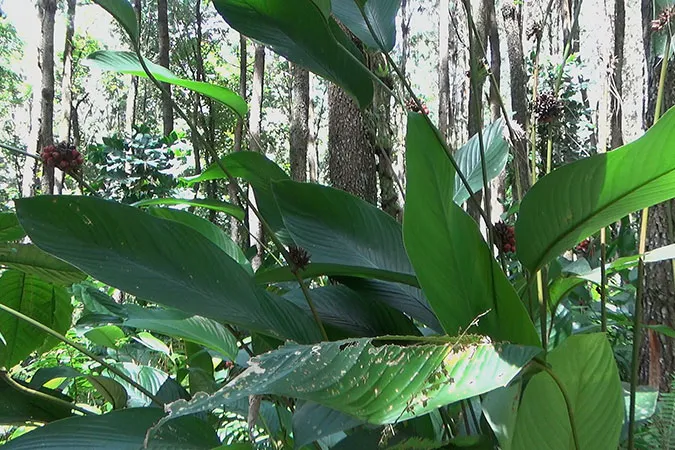Temuyang (Phrynium pubinerve) is a species of plant in the Marantaceae, erect herbaceous, forming dense bush colonies, up to 2 meters high, green, roots forming tubers, growing in shady places on the tropical forest floor, agricultural lands and abandoned places.
P. pubinerve has petiole cylindrical, erect and sturdy, emerging from the ground, up to 1.5 meters long, green, sometimes splitting to form linear branches ending with two leaves.
Strands appear at the tip of the stalk, oblong to elongated, up to 50 cm long, pointed tip, margins flat, a major vein in the middle with many minor veins penetrating, upper side dark green and shiny, underside pale green.
The flowers are in nodules, appear on the petiole and are tightly packed, The fruits are oval, red in color, contain 2-4 seeds and open when ripe. The seeds are rectangular and gray in color.
Kingdom: Plantae
Phylum: Tracheophyta
Subphylum: Angiospermae
Class: Liliopsida
Order: Zingiberales
Family: Marantaceae
Genus: Phrynium
Species: Phrynium pubinerve
P. pubinerve has petiole cylindrical, erect and sturdy, emerging from the ground, up to 1.5 meters long, green, sometimes splitting to form linear branches ending with two leaves.
Strands appear at the tip of the stalk, oblong to elongated, up to 50 cm long, pointed tip, margins flat, a major vein in the middle with many minor veins penetrating, upper side dark green and shiny, underside pale green.
The flowers are in nodules, appear on the petiole and are tightly packed, The fruits are oval, red in color, contain 2-4 seeds and open when ripe. The seeds are rectangular and gray in color.
Kingdom: Plantae
Phylum: Tracheophyta
Subphylum: Angiospermae
Class: Liliopsida
Order: Zingiberales
Family: Marantaceae
Genus: Phrynium
Species: Phrynium pubinerve
